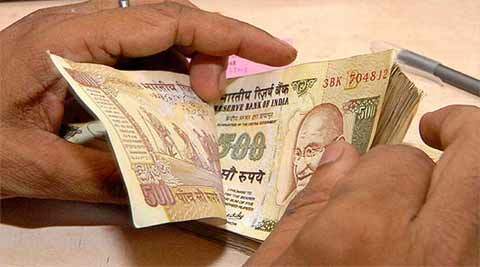Indian rupee outlook: Currency may hit 63 level to dollar, say experts

With foreign portfolio investors (FPIs) continuing to buy Indian bonds and stocks, the rupee could strengthen further, hitting levels of 63 to the greenback, say market watchers. On Friday, the local currency touched a near-three-year high to close at 63.37 against the dollar. While the immediate reason for the rupee’s strength is the weakening of the greenback, over the past year foreign inflows of more than $30 billion into the equity and debt markets saw the rupee steadily strengthen against the dollar, notching up gains of over 7%. Close to $25 billion came in by way of FDI equity flows between April and September 2017. Currency expert AV Rajwade believes the rupee may very well breach the 63 level, depending upon the Reserve Bank of India’s (RBI) stance. “The central bank might allow the rupee to strengthen, as it will help rein in inflation,” Rajwade explained.
However, exporters are a nervous lot. As Jamal Mecklai, CEO, Mecklai Financial Services, points out there was some positive exports data in November. “But, on an absolute basis, we are still way below what we used to see in 2011. In that context, there is still much to be done,” Mecklai pointed out. Rajwade observed the central bank’s currency stance hasn’t been right. “Our exports are suffering and manufacturing has remained stagnant for some time. Even if you look at the REER (real effective exchange rate), it indicates that the currency is very over-valued at the current juncture,” he noted.
Currency and money expert Ananth Narayan pointed out that the RBI may intervene if the rupee continues to appreciate too much, but the options might be limited. “Firstly, with an independent monetary policy, compromise on the currency or capital flows can become inevitable. Secondly, the Trump administration in the US is already watching countries for possible currency manipulation. Given our trade surplus with the US, it may be a factor that cannot be ignored forever,” Narayan explained.
Mid-sized and small businesses in the apparels and leather sectors are bearing the brunt of the stronger rupee with large organised players in sectors like IT services and pharmaceuticals somewhat better prepared. MV Narasimhan, SVP & global head, business finance, Dr Reddy’s Laboratories, observed that while in the near term, hedging policies across companies would largely cover the appreciation they would need to keep a careful watch on the movement in the currency. Jayant Tagore, CMD, Synthokem Labs, said most companies have bought forward contracts till next December. “Should the appreciation continue pharma companies may increase prices by about 10% in the export markets,” Tagore said.
For now IT companies are confident of maintaining their margins using the levers such as utilisation and automation. “There has also been some improvement in the pricing environment,” a senior IT executive noted, adding this was especially true for fixed-price projects. Moreover, with greater automation, costs are being reined in. The thumb rule in the IT sector is that operating margins contract by 30-40 basis points for every one percent appreciation of the rupee.
Exporters of textiles, said S Sakthivel, former president of Tirupur Exporters’ Association (TEA) and chairman of Poppys Knitwear, would lose some bargaining power. “For every rupee of appreciation, exporters stand to lose `35 crore a month on total monthly exports of about Rs 2,300 crore. “At an all-India level, the loss would be an estimated Rs 150 crore a month,” Sakthivel said.
The US Treasury department in October had said that over the first half of 2017, there was a notable increase in the scale and persistence of India’s net foreign exchange purchases, which have risen to around $42 billion (1.8% of GDP) over the four quarters through June 2017. “India has a significant bilateral goods trade surplus with the US, totaling $23 billion over the four quarters through June 2017. Treasury will be closely monitoring India’s foreign exchange and macroeconomic policies,” the report indicated.

.webp)
.webp)
.webp)
.webp)
.webp)
.webp)
.webp)
.webp)
.webp)
.webp)







